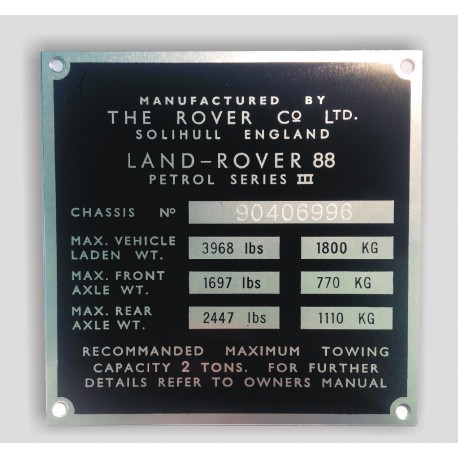
Preserving the Legacy: The Essential Guide to Land Rover Series 3 Restoration
For enthusiasts of classic off-road vehicles, the Land Rover Series 3 stands as a towering icon of rugged durability and timeless design. Produced between 1971 and 1985, this series marked the final evolution of the original Land Rover concept before the introduction of the more modern Defender line. Whether you're a seasoned restorer or a newcomer to the world of classic Land Rovers, understanding the nuances of the Series 3 models is key to a successful restoration.
The Land Rover Series 3: An Overview
The Series 3 Land Rover introduced several significant improvements over its predecessors, including a more comfortable interior, an improved gearbox with synchromesh on all forward gears, and a more reliable electrical system. Available in various body styles, including the short-wheelbase (SWB) 88-inch and the long-wheelbase (LWB) 109-inch versions, the Series 3 catered to a wide range of uses, from agricultural workhorses to military transport.
Key Models:
88-inch Wheelbase: The more compact of the two, the 88-inch model, is beloved for its agility and ease of maneuverability. Ideal for narrow trails and tight spaces, it embodies the spirit of adventure that has made the Land Rover a legend.
109-inch Wheelbase: The 109-inch offers increased cargo space and stability, making it a favorite for overlanding and commercial applications. Its capacity to handle heavy loads while traversing challenging terrains is unparalleled.
Series 3 Lightweight: Designed for air portability, the Lightweight was engineered to be easily transportable by helicopter, catering specifically to military needs. Its stripped-down design and modified frame make it a unique restoration project.
Stage One V8: Introduced in the late stages of Series 3 production, the Stage One V8 model featured a powerful 3.5-liter V8 engine, laying the groundwork for the future Defender's performance capabilities. This model is highly sought after by collectors for its blend of classic design and enhanced power.
Restoration Considerations
Restoring a Series 3 Land Rover is a rewarding challenge that requires attention to detail, patience, and a deep appreciation for the vehicle's heritage. Key considerations include:
Body and Frame: Check for rust and structural integrity, especially in common problem areas like the bulkhead, chassis, and door frames.
Engine and Mechanicals: The Series 3 came with several engine options, including the robust 2.25-liter petrol and diesel variants. Ensuring the engine runs smoothly and reliably is crucial, as is overhauling the gearbox and transfer case to handle modern driving conditions.
Electrical System: Upgrading the electrical system, including the wiring harness and fuse box, can prevent common issues and improve reliability.
Interior and Exterior: Preserving or restoring the original look and feel of the interior and exterior is essential for authenticity. This includes sourcing original or high-quality reproduction parts for everything from the dashboard instruments to the exterior lights and badges.
